It had become a ritual.
As we approached Borris, my father would say “Open the car window now and breathe in that beautiful Borris air. Can you smell it yet?“ Although Dad spent nearly half of his life in England, his heart belonged to his hometown until the day he died.
It’s easy to see why.
Borris, Co. Carlow is a small but perfectly formed Georgian estate town with buildings constructed with local granite flanking the north side of its gently sloping high street.
Dominating the town on the opposite side of the street is Borris House, the ancestral seat of the MacMurrough Kavanaghs, descendants of the Kings of Leinster. In Lower Borris, at the other end of the high street, the clock tower of the Sacred Heart Church rises over the town like an exclamation mark.
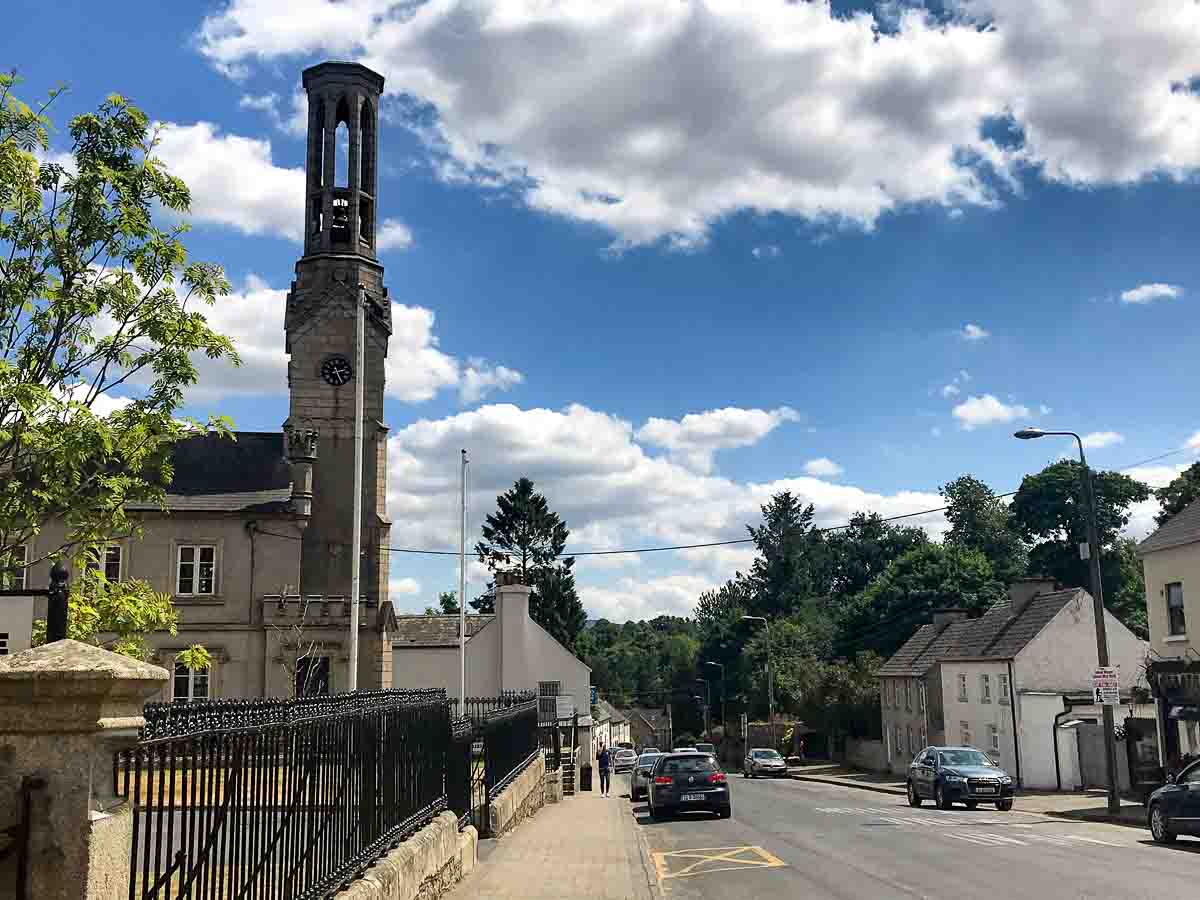
Some articles on this website contain affiliate links. This means that I may earn a small commission if you make a purchase through these links. As an Amazon Associate, I earn from qualifying purchases. Read the full disclosure here.
Why You Should Visit Borris
Although the term ‘authentic’ is overused in travel writing, this Co. Carlow town is the real deal.
There is no evidence of it capitalising on its rich heritage, history and charm to cash in on the tourist Euro. Aside from the recent introduction of a few mini-supermarkets and fast-food outlets, its 19th-century buildings have largely retained their original facades and shopfronts.
In fact, little has changed from childhood visits, when I used to accompany my grandmother on her weekly shopping trip to town. This trip would start with her ‘thumbing a lift’ into town.
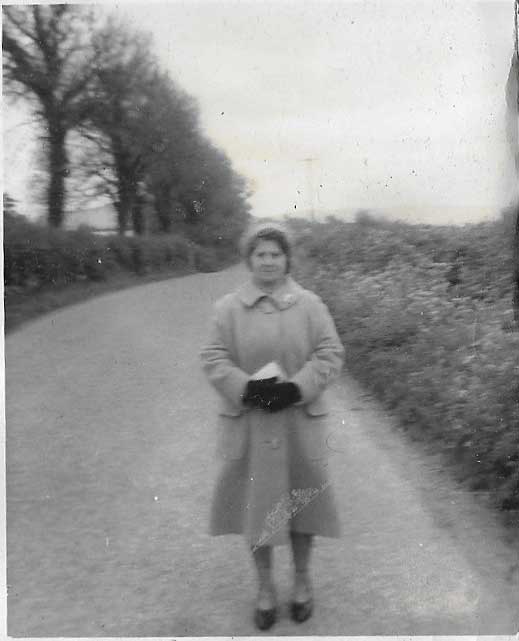
She would then move from shop to shop, passing the time of day with the proprietors and having the occasional argument about the price of bacon that week. One of these establishments – the venerable O’Shea’s – includes one of her shopping invoices in its case of memorabilia.
After some hours, the shopping trip would end with the promised glass of red lemonade. Happy days.
Arthur MacMurrough Kavanagh: The Limbless Landlord of Borris
The fortunes of Borris are closely entwined with that of the MacMurrough Kavanaghs, particularly Arthur MacMurrough Kavanagh, who was born on 25th March 1831 without any arms and legs.
The reason for these deformities is open to debate. Some say that this was the result of his mother, Harriett Kavanagh, overdoing it with the laudanum during pregnancy. Others maintain that the umbilical cord severed his limbs during delivery.
Whatever the cause, Arthur MacMurrough Kavanagh went on to lead an extraordinary life, to an extent that beggars belief.
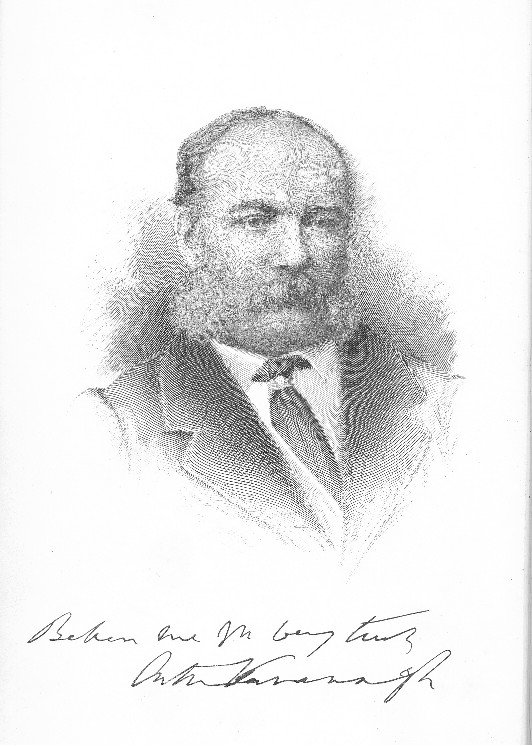
He became a proficient horseman, an expert angler and a good painter. Briefly exiled from Borris House when his mother found out that he had been conducting affairs with girls on the estate, he travelled extensively and ended up as a despatch rider for the East India Company.
This was, again, at the behest of Harriett Kavanagh, when she discovered that he had spent two weeks in an Indian harem. Arthur certainly liked the ladies!
Following the death of his older brother, Thomas, in 1851 he succeeded to the family estate.
Under his guiding hand, Borris prospered. He built a sawmill, founded a lace-making industry and established a lime kiln.
Elected as MP for Co Wexford at the age of 35, he became the only limbless man to sit in the House of Commons. However, the political tide in Ireland was turning.
In 1880 he was thrashed by the Home Rule candidate. On his return to Borris, instead of the customary celebratory bonfire, he was greeted by the townsfolk burning his effigy and celebrating his downfall.
His political career in tatters and his health failing, he died nine years later at the age of 58. It was said of him: “He did not equal any man, but few men equalled him.”
Borris House
The 50-room house that Arthur MacMurrough Kavanagh called home was built in 1731. Borris House is one of the few great Irish houses to be built beside a town.
Following serious damage inflicted during two attacks during the 1798 rebellion, the house we see today was restored in the early 1800s.
In 1958 Borris House faced ruin. Following the death of her husband, Joane Kavanagh moved to a smaller house on the estate.
However, Andrew Macalpine-Downie, Joane’s son, returned to Borris after a career as a jockey in England. He then set about running the 650-acre estate and reclaiming the Kavanagh surname.
The Kavanagh family continue to live in Borris House.
- Borris House is open for guided tours on selected days from April to September.
- Borris House also hosts the annual Festival of Writing and Ideas. The next one is scheduled to take place between the 7th and 9th of June 2024.
Borris Viaduct
Borris’s magnificent 16-arch viaduct, towering over the river 50 meters below, is another legacy of Arthur MacMurrough Kavanagh.
He instigated its construction and was instrumental in bringing the railway to Borris. This line from Wexford to Muine Bheag (Bagenalstown) was operational from 1858, finally closing to passengers in 1931. The old station house still stands in the aptly named Station Road.
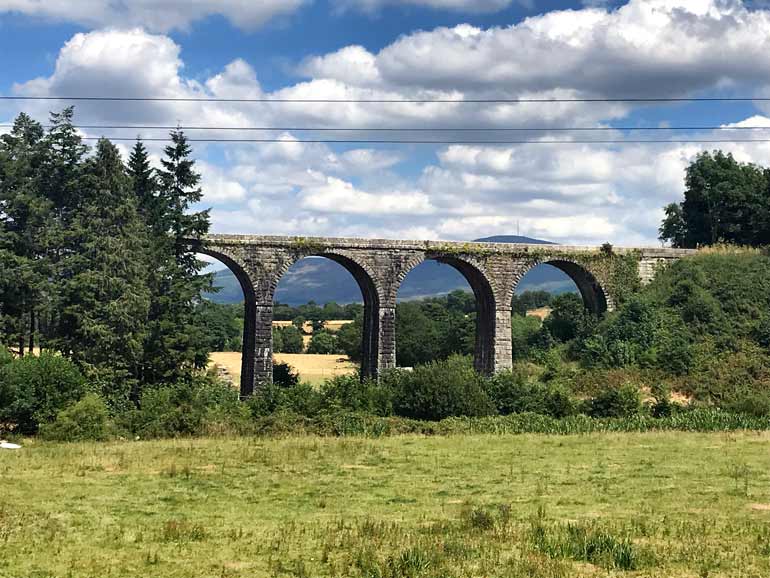
Thanks to a generous Government grant, which funded resurfacing work, safety enhancements and improved access, you can now walk across the viaduct.
The viaduct is located at the edge of Lower Borris. There are car parks at each end of the viaduct: the old car park on the R702 main road and a new one by Borris Vocational School.
End to end, the viaduct walk is 500 meters, making a return walk 1 kilometre long. An optional 500-meter extension takes you below the arches and along the river.
The Borris viaduct walk is also family and buggy-friendly.
Two Easy Walks Near Borris
Borris’s other draw is its setting.
The Blackstairs Mountains, running along the border of Co Carlow and Co Wexford, loom over the eastern end of the town. The River Barrow is to the west. Both offer multiple walking and fishing opportunities.
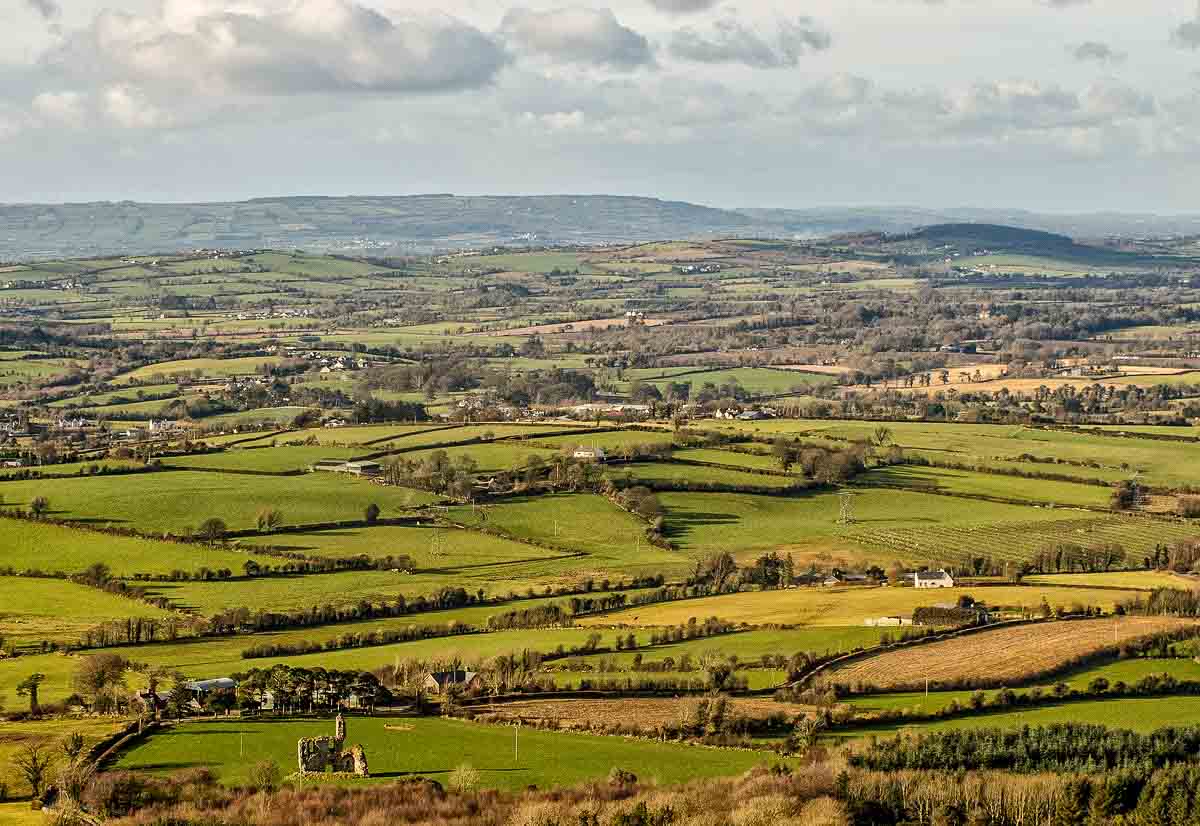
Here are a few ideas for walks:
Barrow Way Walk
When I was growing up, the River Barrow meant three things: maggots, flies and fish.
The maggots that I helped Dad collect as bait for his fishing trips on the Barrow.
The flies buzzing around our faces as we sat patiently on the riverbank during those hazy, seemingly endless summer days.
And finally, the smell of fried eels emanating from my grandmother’s kitchen, the result of a successful day’s fishing by my father and his brothers.
Only when I was older could I fully appreciate the serenity and beauty of the Barrow Line. It is here that you will be able to take one of the most beautiful walks in Ireland.
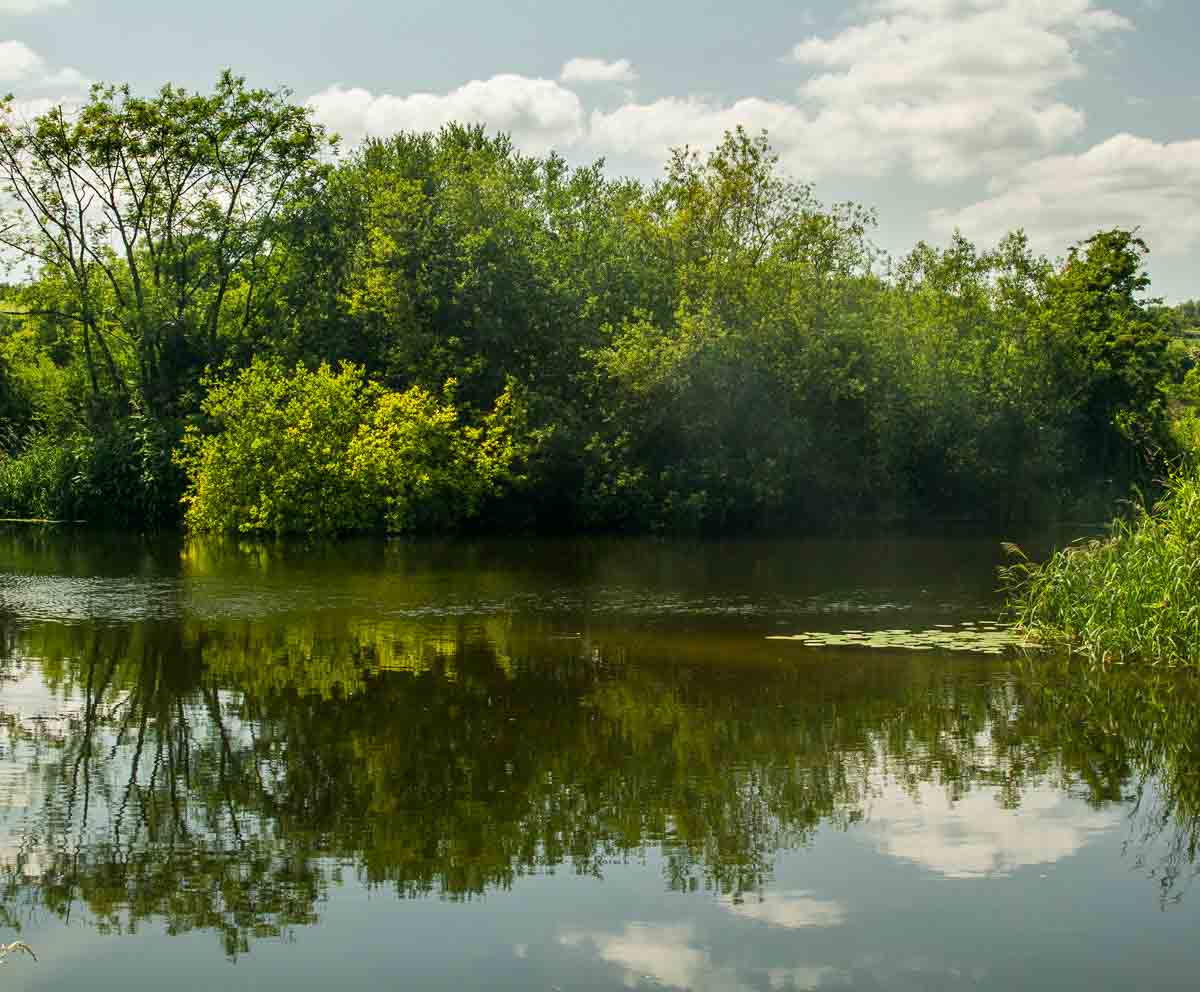
The Barrow Way follows the old towpath alongside the River Barrow from Robertstown to St. Mullins. The total distance is 113km.
The walk from Ballytiglea – my father’s childhood home just outside Borris – to St Mullin’s is around 11km but can be divided into sections. Except for the section that goes through Graiguenamanagh, there are no roads, no cars and no noise, except for the occasional rustle in the undergrowth.
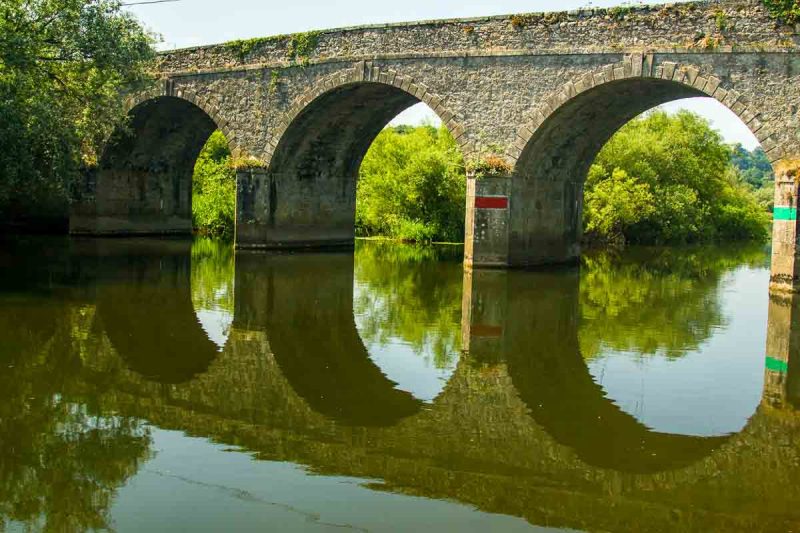
It is worth stopping in Graiguenamanagh to look at Duiske Abbey, one of Ireland’s finest Cistercian monasteries.
Founded in 1204, it has been rebuilt many times and now serves as the town’s parish church. Graiguenamanagh is also the home of Duiske Glass and the gift shop provides a great opportunity to pick up tasteful gifts for those back home.
St Mullin’s is a destination in its own right.
There are the ruins of four churches and the base of a round tower, believed to have made up the monastery founded by the seventh-century local saint, St Moling. With its close links with major ecclesiastical centres such as Glendalough in Co. Wicklow, St. Mullins has been a major place of pilgrimage for centuries.
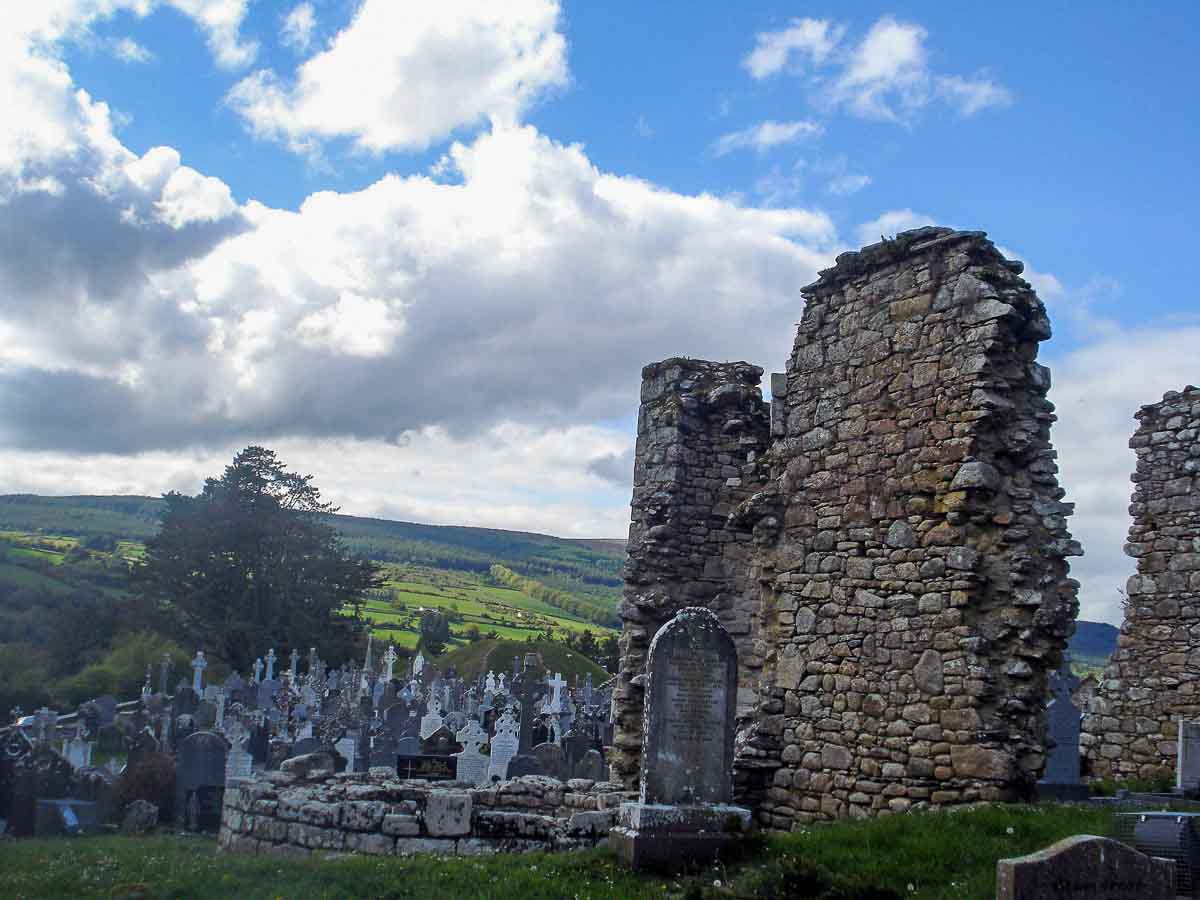
The nearby St. Moling’s Holy Well is still visited.
And the MacMurrough Kavanaghs are never far out of the picture in this part of Ireland. The graveyard at St Mullin’s is said to be the burial place of the kings of Leinster.
Borris to Nine Stones
Named after the stones commemorating nine shepherds lost on Mount Leinster, the Nine Stones is the highest point of the Blackstairs Mountains and offers spectacular views.
On a clear day, you can see eight counties from here. On an exceptionally clear day, the Welsh coast is just about visible.
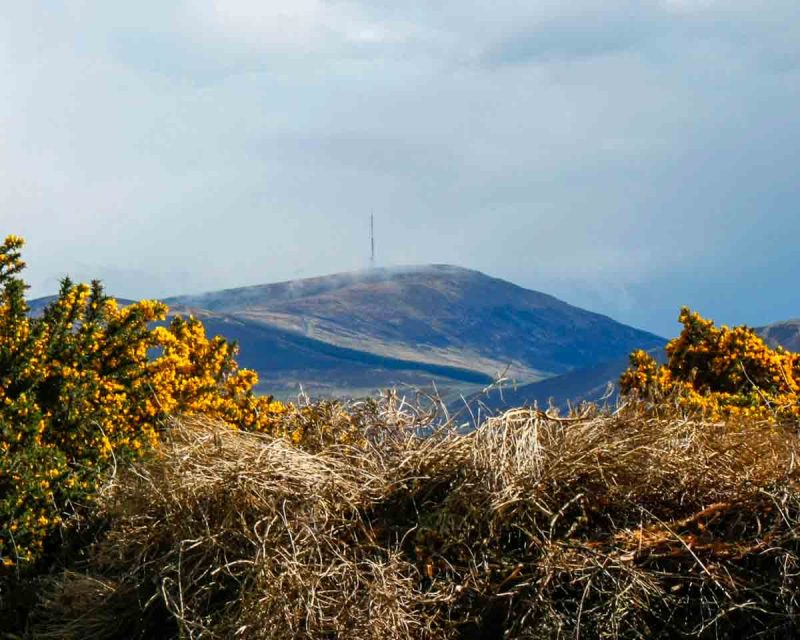
The walk from Borris to the Nine Stones is a touch over 10 km and takes around three hours to complete. Whilst I have never walked from Borris to the Nine Stones, my grandfather took me up there in his wheezing Renault 4 many years ago.
Borris Fair
I couldn’t write an article about Borris and not mention Borris Fair.
This is held on 15th August each year, the feast of the Assumption. It is thought to date back to a 400-year-old charter, granted by Queen Elizabeth I.
This is one of Ireland’s oldest horse fairs, and thousands pile into the town for the event. Traveller families set up their stalls along the high street selling goods from designer knock-offs to religious knick-knacks, the aroma of curried chips perfuming the air.
And there are always socks for sale. Lots of socks.
Here’s how local legend Richie Kavanagh sees it:
The Pubs of Borris
Let’s return to authenticity.
We are all too familiar with the faux Irish pub revolution. You know the sort of place I mean. Guinness on tap, a Gaelic road sign hanging over the bar, The Pogues playing on the jukebox, lots of things made of cast iron.
These ersatz establishments sprung up in the early 1990s from Seville to Singapore and from Delhi to – God forbid! – Dublin.
Sadly, this branding of Irish pubs owes more to lazy cultural stereotypes and large companies seizing the opportunity to make large profits, than authentic Irish tradition.
Forget what you think you know about Irish pubs. In Borris, you get the real thing.
Whether you end up in O’Shea’s, Joyce’s or Bob’s Bar, you may not get reproductions of antique spinning wheels but you will get a warm fire and warmer welcome. And you might be able to pick up a box of nails or some light bulbs at the same time as downing a glass of the black stuff.
So that’s Borris for you. In Dad’s words “The best little town in Ireland”.
It just goes to show that there really is no place like home.
How to Get to Borris, Co. Carlow
Borris is located in the beautiful Barrow Valley in County Carlow, in the heart of Ireland‘s Ancient East.
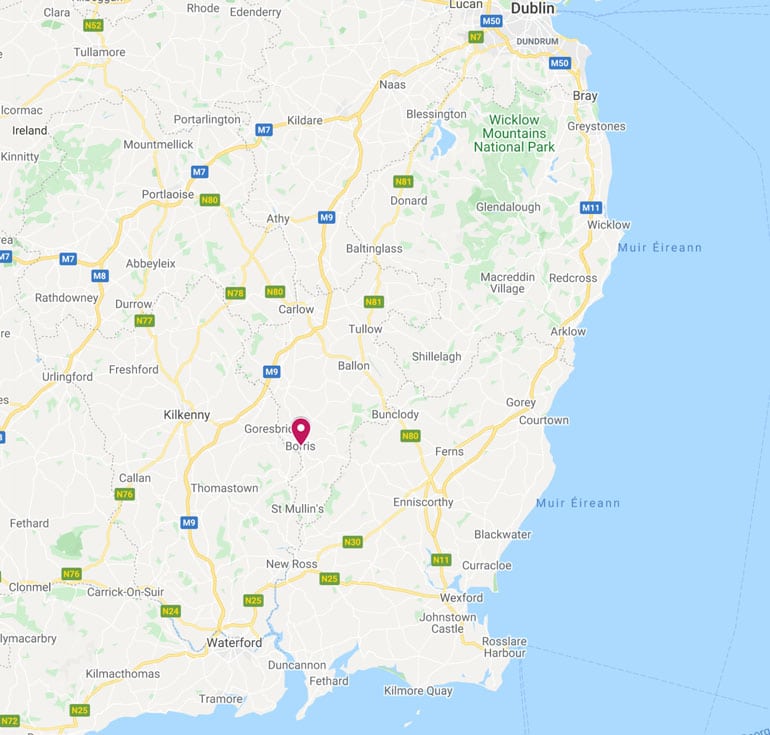
The nearest airport is Dublin, 127 km to the north. The journey from here by car is mostly on motorways and takes under two hours.
The closest railway stations are Muine Bheag (Bagenalstown), Carlow or Kilkenny. Check the times of trains here.
As public transport is limited, this is one place where you need a car.
The 881 bus, operated twice a day by Kilbride Coaches, will bring you from Kilkenny to Borris in 40 minutes. Bus 887 operates three times a day between Carlow to New Ross, stopping at Borris. The journey from Carlow Train Station to Borris takes 45 minutes.
You can plan your journey to Borris by bus or train here.
Where to Stay in Borris
The Step House Hotel – this boutique-style hotel in the heart of Borris is recommended. Room rates include a hearty breakfast.
For a cosy, centrally-located AirBnB with stellar customer feedback, try Aunt Maggie’s.

About Bridget
Bridget Coleman has been a passionate traveller for more than 30 years. She has visited 70+ countries, most as a solo traveller.
Articles on this site reflect her first-hand experiences.
To get in touch, email her at hello@theflashpacker.net or follow her on social media.

I have visited Borris at least once a year for the past 60 years. My Aunt Eileen was Headmistress at the local school and my Uncle Liam owned O,Connors bar in the main street. It has taken your short video for me to see the real beauty and history of the town. We shall visit the house on our next visit, whenever that may be.
Hello John
I don’t think I quite appreciated the place fully myself until I wrote this!
Hoping to get back there once the world is a safer place
Bridget
Thank you for this very interesting piece on Borris. For the past no of years i have been working in The region as a Project Manager helping to develop the environmental aspects of the area with the help of local part-time participants from DEASP.
Hello James
Thanks for the feedback. Your work sounds very interesting!
Bridget
Great article and this is why I returned to Borris my birth place with my family. Perhaps you might share your Family name with me as I cannot see any reference on of your Da and Grand Mother.
My family name is Hynes from Cournellan and we live a field away from the Barrow and perhaps some of my family fished with your Da
Hello!
Thanks for the feedback. Dad was one of the Colemans of Ballyellen. Granny was a Kavanagh of Ballytiglea. Ring any bells?
Bridget
Best history of Borris ever recorded.
Thank you so much :)
Great article cousin Breda. I love the photel of Granny Coleman. Hope you’re keeping well x.
Thanks Michael!
Thanks for sharing this article. Granny C was a star.
Challenging times but we’ll get through it. Keep yourself and your family safe.
Bx